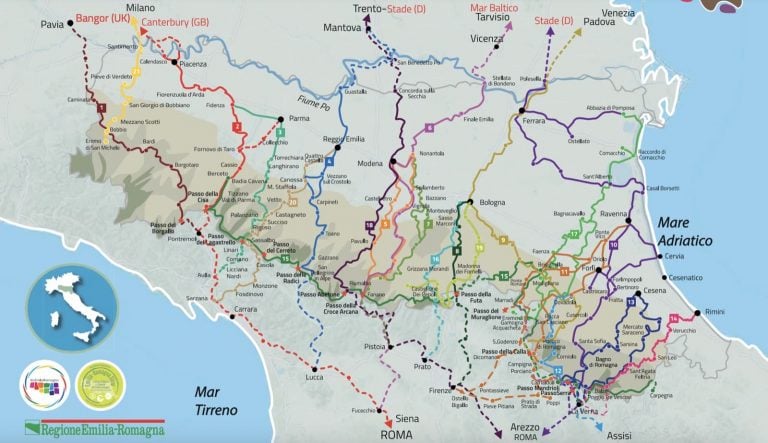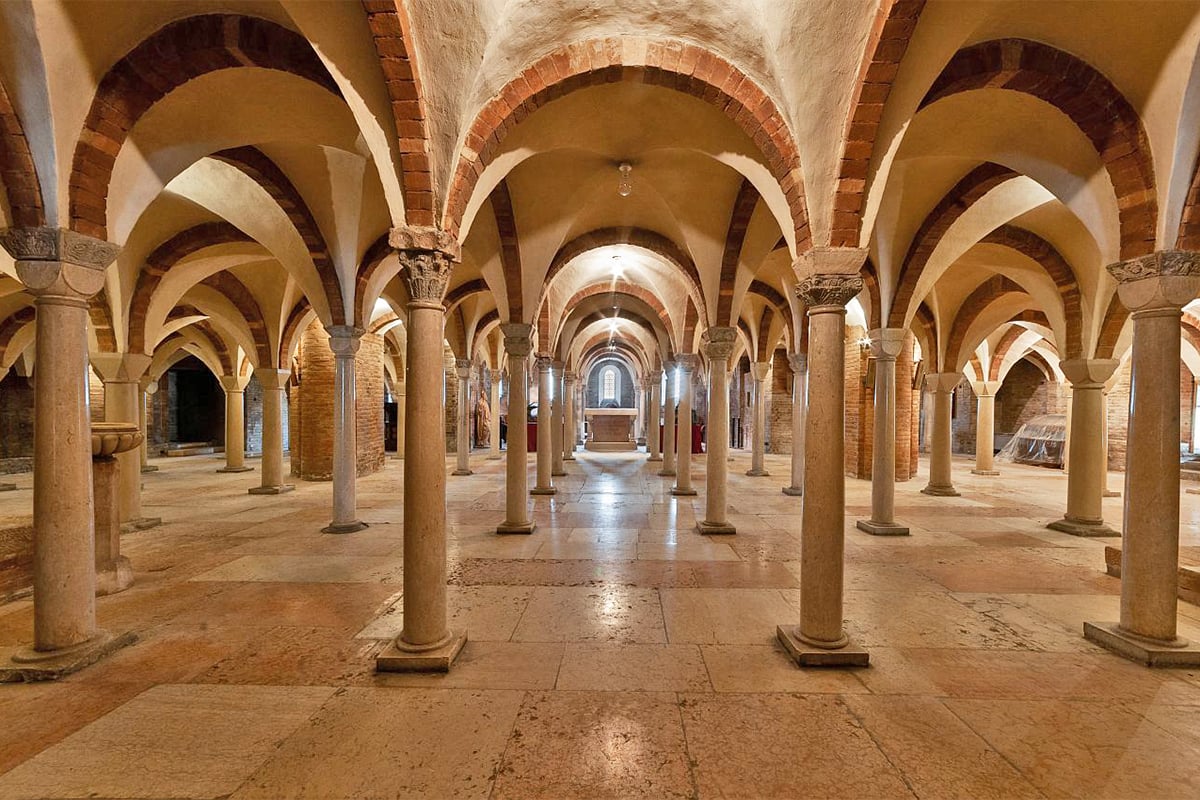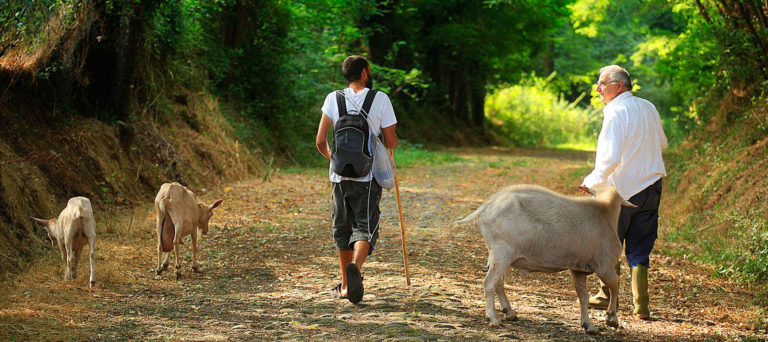In 1236, Albert of Stade, abbot of the benedictine monastery of St Mary’s in Stade (Germany), went to Rome to ask Pope Gregory IX’s permission to introduce a stricter, new ecclesiastical regime. Although the pope agreed, the local potentates absolutely refused to implement it. Albert finally decided to step down from his role as abbot and join the Friars Minor of St John of Stade.
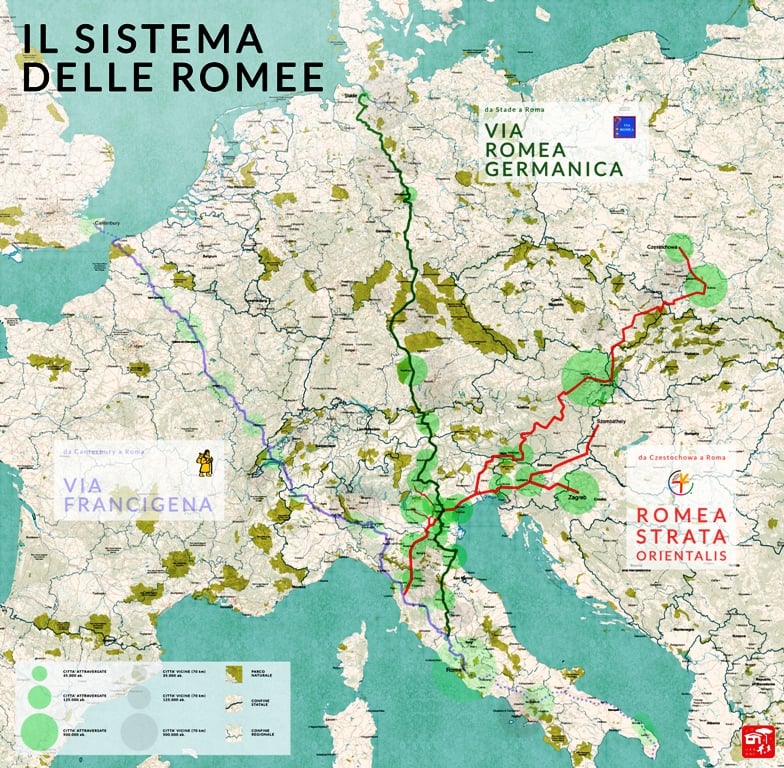
There, Albert devoted himself to writing the so-called Annales, a Latin chronicle of the most important events of his time, which also included a dialogue between two monks about the best pilgrimage routes to Rome. This was a very clever literary device to enable Albert to describe his journey to Rome precisely, with all the places to stop and the exact length of the individual stages.
This is how the 13th century saw the birth of the Romeo-Germanica Way, or Via Romea dell’Alpe di Serra (as it was commonly called by pilgrims and wayfarers), which in time became the chosen route by which the peoples of central and northern Europe made their pilgrimage to Rome. It also became the route by which the Saxon kings and emperors, as well as the Swabian rulers, maintained their connections with the Eternal City. This route was so popular that between the 11th and 12th centuries it became by far the most travelled route to the tombs of Peter and Paul.
Today, thanks to the conservation efforts of the Via Romea Germanica Association, this ancient itinerary from Stade (Germany) to Rome is 635 miles long with about 97 stages. Each stage is described in detail on the official website of the route, including the height difference of the individual stages and which stages are suitable for cyclists
Services and practical information
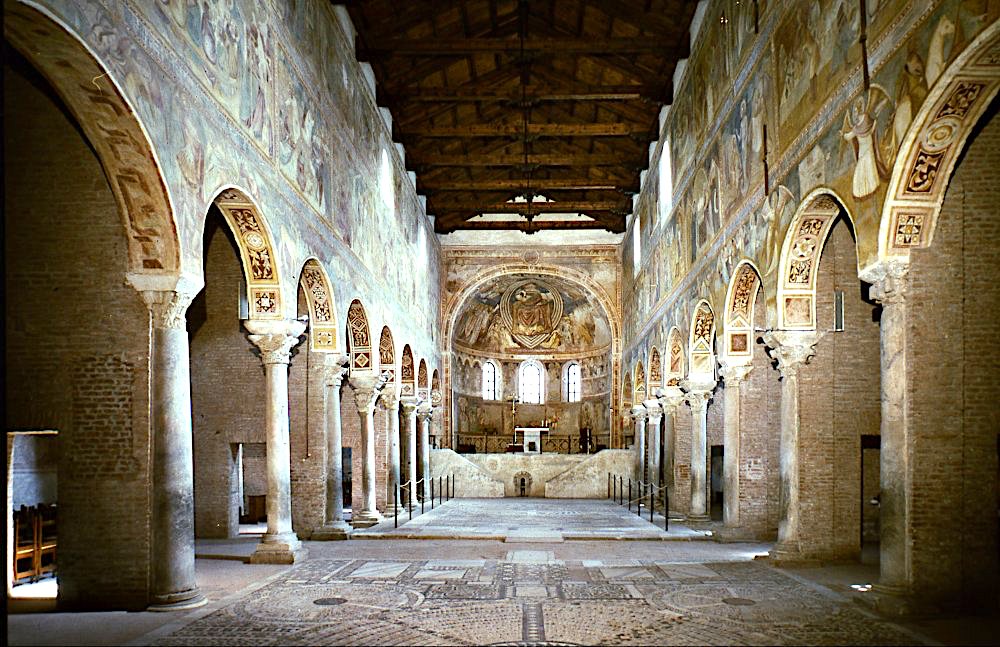
The Romea Germanica Way enters Emilia-Romagna at the River Po crossing near Ferrara, where there are various alternative paths to try: the Ferrara-Argenta, the Ferrara-Ro, the Ferrara-Ostellato and the Ferrara-Pomposa.
The route then passes through the territory of Ravenna and, once it reaches the Apennine mountains, climbs up towards Bagno di Romagna and the Serra Pass, from where it then descends towards the city of Arezzo and Rome.
You can get your Pilgrim Credential from the Way’s official website. With this, you commit to treating the flora and fauna – and your fellow travelers – with respect; in return, you can use the “Ospitali” (hostels) along the route and benefit from any discounts.
For more information on the Romea Germanica Way’s fascinating history, check out the official website.
The Emilia-Romagna segment of the Romea Germanica Way has 11 stages:
Stage 1 | Polesella (Ro) – Ferrara (12.4 miles)
Stage 2 | Ferrara – Traghetto (18.6 miles)
Stage 3 | Traghetto – Argenta (10.6 miles)
Stage 4 | Argenta – Anita (14.9 miles)
Stage 5 | Anita – Casalborsetti (16.2 miles)
Stage 6 | Casalborsetti – Ravenna (11.2 miles)
Stage 7 | Ravenna – Forlì (18.6 miles)
Stage 8 | Forlì – Cusercoli (19.9 miles)
Stage 9 | Cusercoli – Santa Sofia (12.4 miles)
Stage 10 | Santa Sofia – Bagno di Romagna (15.5 miles)
Stage 11 | Bagno di Romagna – Casa Santicchio (11.2 miles)
There’s also a variant of the Romea Germanica Way in Emilia-Romagna for cyclists:
Stage 1 | Ferrara – Ostellato (25.4 miles)
Stage 2 | Ostellato – Pomposa (18.3 miles)
Stage 3 | Pomposa – Mesola (13.8 miles)
Stage 4 | Mesola – Goro (12.4 miles)
Stage 5 | Goro – Comacchio (19.9 miles)
Stage 6 | Comacchio – Sant’Alberto (about 15 miles)
Length: The entire route from Stade (Germany) to Rome (Italy) covers 1380 miles in 97 stages. The Italian section stretches over 650 miles in 49 stages; the Emilia-Romagna section is 162 miles long.
Difficulty: low, although some legs are quite long; the route presents no particular technical difficulties.
For any info about Emilia RomagnaSlow, please contact m.valeri@aptservizi.com or visit the website camminiemiliaromagna.it
Author

Walter Manni
Explorer and Adventurer: loves sailing the oceans, climbing the highest mountains and surfing on the waves of the web
You may also like
Route Planner: Sloways in Emilia Romagna
by Walter Manni /// July 31, 2024
Monasteries and Spiritual walks in Emilia-Romagna
by Davide Marino /// May 3, 2019
Emilia Romagna Slow | The Francigena Way
by Walter Manni /// May 2, 2017

Interested in our newsletter?
Every first of the month, an email (in Italian) with selected contents and upcoming events.
